Discover 5 Antelope Species
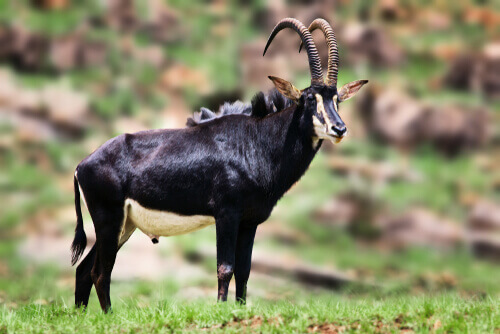
Of the more than 30 antelope genera that exist, most are native to Africa. These ungulate mammals, whose males have horns, are completely herbivorous. They’re known for their multi-colored coats and graceful jumps. In this interesting article, we’ll tell you about five of the most representative antelope species.
Some antelope species
Most of the 90 antelope species live in the wild in Africa; the rest inhabit Asia and the Arabian peninsula. These animals, which are victims of exotic hunting, can live in different habitats. However, they prefer savannas. Some of them are the following:
1. The sable antelope
This is one of the biggest antelope species, similar in size to goats and horses. The sable antelope has a mane, and long, mobile ears. In addition, most of its body is black, except for the chest, underside, and some parts of the face.
This antelope, featured in the main image of this article, is very strong and resistant. In fact, the horns of the males are powerful and they serve both to “win over” females and to defend themselves from predators. This antelope species prefers to live in woodlands and bushes rich in vegetation. In addition, it inhabits southeast Africa.
2. The Arabian oryx
The oryx is an antelope species that consists of four subspecies. However, the Arabian or white oryx is the only one that’s endangered. It’s known for its white fur that covers its entire body except for its legs, the tip of its tail, and face. Both males and females have long, straight, black antlers that slope slightly backwards.
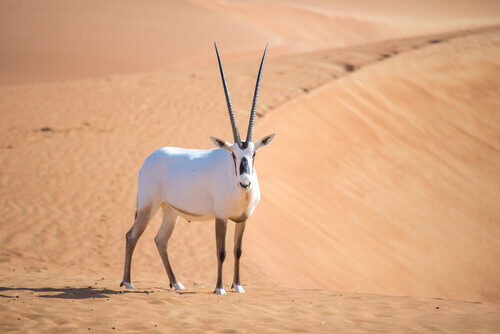
The Arabian oryx breeds between May and December and the gestation lasts 240 days. After being born, the calf feeds on its mother’s milk for 10 weeks. After that time, the diet of this animal consists of fruits, bulbs, and tamarind. For this reason, it can go long weeks without drinking water.
3. The impala
This is another of the best-known antelope species. It’s medium-sized and inhabits central and eastern Africa, specifically Kenya, Uganda, Tanzania, Angola, and Zambia. It’s a slender animal that’s about three feet long and weighs approximately 110 pounds. It has a brown coat and white chest and underside.
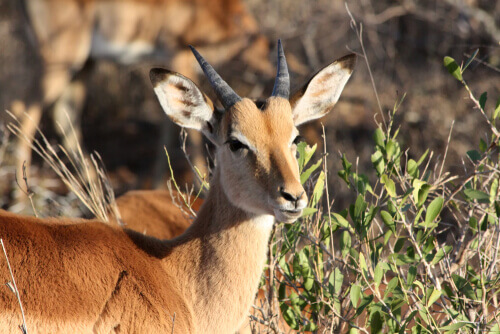
The eyes are big, the ears are tipped, and the males have horns that are about 35 inches long, which they use to fight with other males during the breeding season.
One of the main characteristics of the impala is that it can jump nearly 10 feet. When it does so, it lands on all fours (also known as slotting). This mammal feeds on grass, seeds, and leaves that it finds in savannas.
4. The greater Kudu
This is a big antelope species with remarkable horns and a marked sexual dimorphism. The greater kudú inhabits African savannas. There are five species.
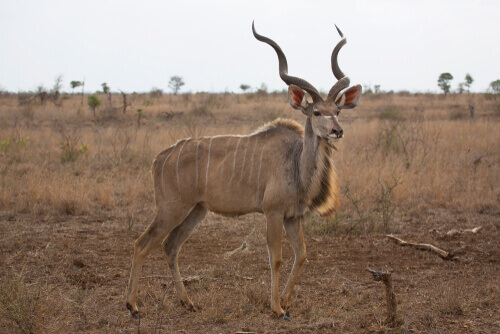
This animal is more than six feet long and weighs about 660 pounds (males), has a white chevron between its eyes, and its coat is light brown with vertical white stripes. In addition, it has nocturnal habits and feeds on branches and leaves. Although its gait is slow, it can jump up to six feet high.
5. The Dorcas gazelle
The last antelope species to make this list inhabits the deserts of North Africa. The Dorcas gazelle is small (no more than 25 inches tall and weighing 44 pounds) and can also be found in grasslands and steppes.
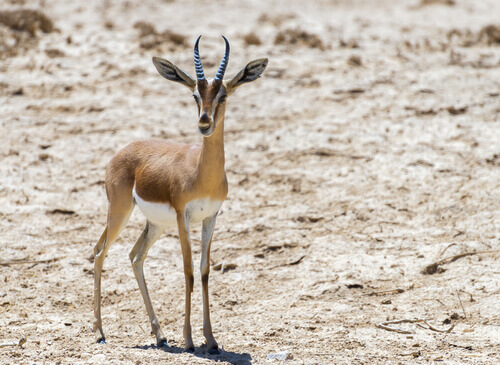
It has a fawn-colored coat and white underside, pointed ears and horns, and a darker forehead and face. In addition, this animal can go its entire life without drinking water, as it gets all the water it needs from the plants it eats.